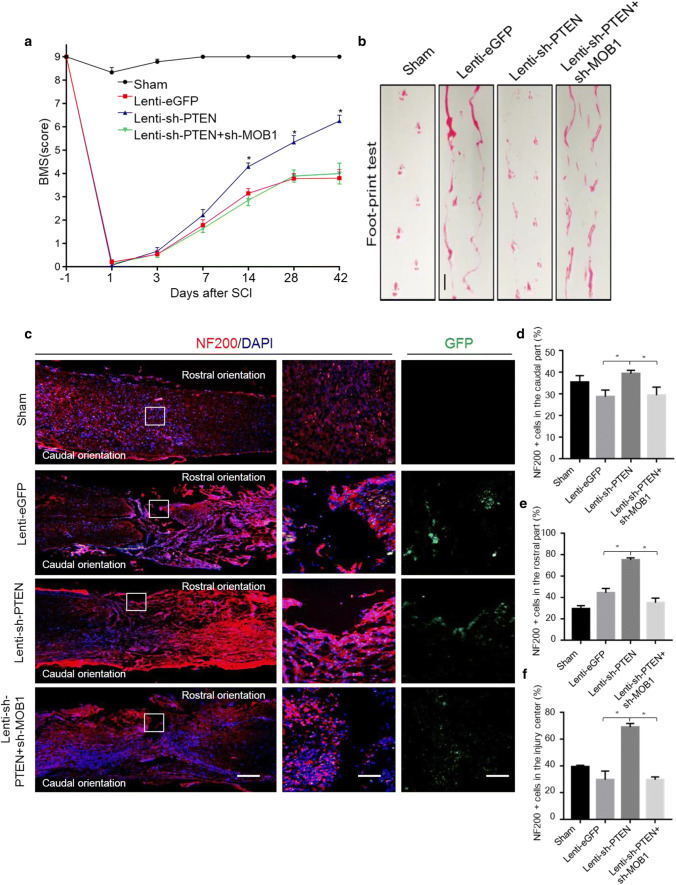Fig. 8.
Lentiviral-mediated silencing of MOB1 reverses functional recovery and neurite outgrowth after mouse SCI caused by PTEN knockdown. a BMS score was determined before injury (day 1) and at days 1, 3, 7, 14, 28, and 42 after surgery (n = 10 in Sham group, n = 12 in Lenti-eGFP group, n = 11 in Lenti-sh-PTEN group and n = 13 in Lenti-sh-PTEN + Lenti-sh-MOB1 group). From week 2 following SCI until the end of the experiment, animals of the Lenti-PTEN group consistently exhibited significantly higher BMS scores compared with the two other SCI groups (*P < 0.05, two-way repeated measures ANOVA followed by Bonferroni’s post hoc test). b Footprint data in false-color mode. Four or more consecutive steps were used to determine the mean values of each measurement. Scale bar, 2.5 cm. c Representative immunofluorescence images of the longitudinal sections of spinal cord showing NF200-Cy3-labeled neurites in the various groups at 2 weeks after SCI (left panels, lower magnifications, scale bar, 1 mm) (right panels, higher magnifications, scale bar, 100 μm). Quantitative analysis of the NF200+ cells in the rostral (d), caudal (e) and central (f) parts of the spinal cord longitudinal sections, respectively (5–7 mice were used in each group. *P < 0.05 vs. Lenti-sh-PTEN group, ANOVA test followed by Dunnett’s post hoc test)

